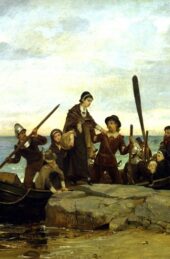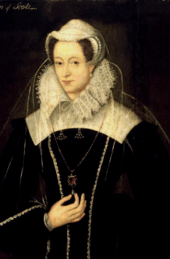The path toward my novel, The Plague Letters, started with letters written by the Rev. Symon Patrick of St Paul’s Church, Covent Garden to his friend, Mrs Elizabeth Gauden. The year was 1665 and a massive plague epidemic had broken out in London. After initially hesitating, Patrick, who was 38, decided to stay behind and look after his parish. Mrs Gauden left the city, seeking safety at her sister’s house in Burntwood – modern day Brentwood, Essex.
As I read these letters, my curiosity was this: who decided to stay, to go head-to-head with of one of history’s most dreaded diseases? How did a person or family survive in such an inconceivable situation – one that I never expected to experience in my lifetime.
My book was already written and on its way to publication when in January 2020, an editor sitting next to me at National Public Radio in Washington said in a dazed sort of way: “They’re shutting down Wuhan. No one’s allowed to leave.” He had just been on the phone with a journalist in China, who had given him the news.
I stood up and asked him to repeat what he’d just said. Because I didn’t believe him.
Wuhan, ground zero for the pandemic we’re grappling with today, is a city of 11 million. It seemed unfathomable that a government could try to seal off a city that large. And why would they? It wasn’t a measure the World Health Organization had ever recommended in previous outbreaks, such as Ebola in West Africa in 2014, or Zika in Latin America in 2016. Conventional wisdom among public health officials was that large-scale quarantines – shutting in the healthy with the sick – weren’t that effective, largely because more people would be hurt than helped. And because people always found a way to escape.
In fact, days after Wuhan was sealed off, the city’s mayor estimated some five million people had fled. For those who weren’t able to leave, the terror had to have been on multiple levels. What would happen to them if they became sick? What would happen to them if they didn’t?
“Who will think of the lives of those of us who are healthy in Wuhan? We are also afraid,” a Wuhan resident posted on the social media site Sina Weibo, according to the New York Times. “Now we are lambs who will still be slaughtered, and we can only leave our fates to the heavens.”
What often struck me during this pandemic was the echo I could hear of the people who lived through London’s Great Plague. Who stays? Who goes? Who follows the rules? Who doesn’t? The newspapers of today read like the writings left behind in 1665.
Covent Garden’s Symon Patrick, who has a second life as a protagonist in my novel, can help answer these questions. St Paul Covent Garden was one of London’s wealthiest parishes and its neighbour to the north, St. Giles in the Fields, was one of the poorest. Many of the bodies from St Giles were brought to Patrick’s churchyard; he was immersed in both of these worlds as the plague played out that year.
The first inklings that a plague epidemic might be upon London came in December 1664 and for the next few months after that, parishes recorded one or two deaths a week. Houses were being shut up – the healthy locked in with the sick, the infamous red slash that marked a plague house painted on their doors.
In April, Patrick tended to a plague death in his own parish. His clerk, a Mr Ramsbury, noted the cause of death in the parish register as plague, but he did not record it as the official cause in the tally of parish deaths that were sent to the central parish clerks’ office, which published the weekly Bills of Mortality for London.
In short, Patrick hid the girl’s cause of death, likely out of deference to the family’s position in the parish. The girl was the daughter of a well-to-do physician, Dr Ponteus, who lived around the corner from the Covent Garden piazza. Her funeral was attended by family and friends and she was buried under the church floor.
This public funeral went against health orders already in place to protect the living from what was known to be a highly infectious disease. At the time, the dead and even their clothes were thought capable of spreading plague. The poor who were sick a few streets over in St Giles were condemned to their houses; Dr Ponteus’ family wasn’t.
There was a second plague death in Covent Garden that April, and again Patrick did not make public the cause. But he did decide to leave London. He went to drink the waters at a newly discovered mineral spring for a month – perhaps to flush any drops of plague from his system – then headed to Lincolnshire to stay with his parents. Lloyd and Dorothy Moote, in their excellent history, The Great Plague, suggest fear might have been his motive for leaving.
But for some reason, Patrick returned. He wrote in his autobiography: “I resolved to commit myself to the care of God in the discharge of my duty.”
And what a miserable sight awaited him on his return. As he travelled back toward London, he would have witnessed what the Mootes describe as the greatest exodus London had ever seen. The main roads out of the city were clogged beyond belief as tens of thousands fled at the end of June and early July.
Samuel Pepys, a civilian officer in the Navy and diarist, witnessed the same exodus Patrick had battled through to get home. In his diary entry for June 21st, he writes about what he saw through the window the Cross Keys tavern at Cripplegate: “I find all the towne almost going… the coaches and waggons being all full of people going into the country.”
The line after that provided the next jumping off point in my novel: “Here I had some of the company of the tapster’s wife a while, and so home to my office, and then home to supper and to bed.” Pepys’ diary is notorious for his frequent mentions of extra-marital affairs, and this entry shows he was not about to let even a plague of biblical proportions deter him from his usual interests.
Pepys and Patrick both held public positions, and both were charged with the care of others. Pepys with the provisioning and ordering of the Navy; Patrick with his parish. They were incredibly civic minded men – and yet, neither one followed the letter of the law when it came to plague.
As the number of plague cases doubled each week that summer, Pepys continued to cross town to do as he always did: make money and entertain himself with London’s gossip and London’s female servants. He writes one day about how troubled he is to learn that plague was in the house of his neighbour, Dr Alexander Burnett, and the need to set his own affairs in order, “in case it should please God to call me away.” Then the next day, a new suit of coloured silk arrives, and he goes on a walk to show it off.
From one entry to the next, even one sentence to the next, Pepys cycles between the urge to live fully and the possibility that he could die at any minute.
Patrick didn’t appear to change his routine by much either. It’s striking – this adherence to habit. As much as we don’t know about the origins of our current coronavirus pandemic (did it jump from bats to humans? Or bats to some other species to humans? And where?), those living in the 17th century were even more in the dark.
This was well before germ theory and the discovery of bacteria or viruses; no one had the faintest idea that fleas and black rats living in the walls and floors of a family’s home were spreading Yersinia Pestis.
Instead, there were a number of competing theories about plague’s origins. Did it sprinkle down from comets shaped like coffins? Or did it come from pestilential seeds and steams buried in cloth imported from Holland? Or, as 34-year-old apothecary William Boghurst wrote in his 1666 plague treatise, Loimographia, was plague an exhalation arising from the fermenting bowels of the earth?

Symon Patrick
Symon Patrick threw his lot in with those who thought that plague was God’s Destroying Angel, a punishment for sinners. The bite of a flea aside, it was thought that plague spread through the air like a poisonous miasma, and to touch a person with plague, or their things, or even to breath the same air might bring death.
Nevertheless, Patrick and Pepys did not keep their distance. Nor did the medical practitioners who stayed behind, such as Boghurst and Pepys’ neighbour Dr Burnett. The apothecary and the physician treated many dying patients at their bedside; Pepys wrote of bodies he encountered in the streets: “It was dark before I could get home, and so land at Churchyard stairs, where to my great trouble I met a dead corpse of the plague, in the narrow ally just bringing down a little pair of stairs.”
When Patrick discovered that his parish clerk’s wife and child had plague, he again ignored the public health regulations. Instead of ordering Mr Ramsbury shut up in his house with his family, he tells the man to keep coming to work. And Patrick, at the height of the epidemic in September, did not stop his home visits and deliveries of money and food to the sick.
None of these men were in denial. They all believed plague was real and lethal – yet they kept on going.
“Your unworthy friend, you see, is still in this world, by the Great mercy of God to him,” Patrick writes to Elizabeth Gauden on September 19th, “how long he continues, none knows.” In that same letter, he responds to a request by her to leave: “Somebody must be here, and is it fit I should put such a value on myself, as my going away and leaving another will signify?”
For those who stayed and lived to write about it, we see their emotions roiling just under the surface. Patrick wrote about fears that bread, beer and wine were not safe to buy. Pepys more than once talks about ordering his affairs in case he dies. They both struggled with how long to stay in the city, when so many of their peers had left.
The number one antidote to plague, as prescribed by physicians at the time, was flight. In fact, out of London’s 59 licensed physicians, only ten stayed behind. The Mootes’ estimate there were about 500 to 600 medical practitioners – surgeons, apothecaries, doctors, quacks – working in London at the time. Half of them left.
Patrick wrote about this strict demarcation between who left and who didn’t: “None but the ordinary sort of people continued (in his parish), all the gentry and better sort of tradesmen being gone.” Covent Garden, like many of the richer neighbourhoods across the city, had emptied out. Servants and the working poor were left behind, along with the tradesmen and shopkeepers who couldn’t pay for security to protect their goods.
London’s population at the time was half a million. It’s estimated that 200,000 fled the city, most of those had the money to do so. Those who left the city without a certificate of health from the Lord Mayor or a designated home to welcome them had a hard road, indeed. Villages were unwilling to take in strangers from plagued London, and used force to keep them out. Out of the 300,000 who remained in the city, including after the King and Lord Mayor ordered London closed indefinitely on August 1st, as many as 100,000 died – an incredible death rate.
The rules we’ve been advised to follow in our current pandemic are not much different from what Londoners were asked to do in 1665. Keep your distance, follow curfews, stay home if you’re sick, or go to the modern day, light years-better version of the pest house – the hospital. And from what I can tell in the writings of Patrick and others, the individual response to these rules surprisingly has not varied much either.
Are the motives different these days for disregarding public health recommendations? In some ways, I doubt it. Patrick and Boghurst broke rules out of a sense of professional calling, a loyalty to the individuals in their care. Pepys stayed behind, it seems, out of habit; a love of his London life, a love and commitment to his position with the Navy. There’s a predictability to human nature, it seems: in strange times we will do strange things. The why of it is much more elusive.
V.L.Valentine is the author of The Plague Letters.
Aspects of History Issue 8 is out now.







